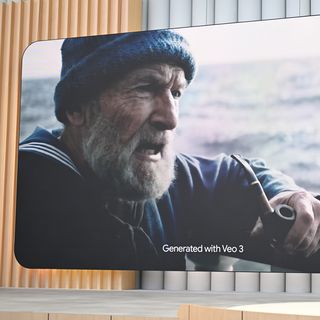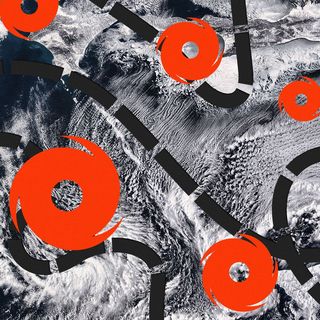Google's new Veo 3 AI video tool floods internet with real-looking clips
Google's newest AI video generator, Veo 3, generates clips that most users online can't seem to distinguish from those made by human filmmakers and actors.
Why it matters: Veo 3 videos shared online are amazing viewers with their realism — and also terrifying them with a sense that real and fake have become hopelessly blurred.
The big picture: Unlike OpenAI's video generator Sora, released more widely last December, Google DeepMind's Veo 3 can include dialogue, soundtracks and sound effects.
- The model excels at following complex prompts and translating detailed descriptions into realistic videos.
- The AI engine abides by real-world physics, offers accurate lip syncing, rarely breaks continuity and generates people with lifelike human features, including five fingers per hand.
- According to examples shared by Google and from users online, the telltale signs of synthetic content are mostly absent.
Case in point: In one viral example posted on X, filmmaker and molecular biologist Hashem Al-Ghaili shows a series of short films of AI-generated actors railing against their AI creators and prompts.
I did more tests with Google's #Veo3. Imagine if AI characters became aware they were living in a simulation! pic.twitter.com/nhbrNQMtqv
— Hashem Al-Ghaili (@HashemGhaili) May 21, 2025
Special effects technology, video-editing apps and camera tech advances have been changing Hollywood for many decades, but artificially generated films pose a novel challenge to human creators.
- In a promo video for Flow, Google's new video tool that includes Veo 3, filmmakers say the AI engine gives them a new sense of freedom with a hint of eerie autonomy.
- "It feels like it's almost building upon itself," filmmaker Dave Clark says.
How it works: Veo 3 was announced at Google I/O on Tuesday and is available now to $249-a-month Google AI Ultra subscribers in the United States.
Between the lines: Google says Veo 3 was "informed by our work with creators and filmmakers," and some creators have embraced new AI tools. But the spread of the videos online is also dismaying many video professionals and lovers of art.
- Some dismiss any AI-generated video as "slop," regardless of its technical proficiency or lifelike qualities — but, as Axios' Ina Fried points out, AI slop is in the eye of the beholder.
- The tool could also be useful for more commercial marketing and media work, AI analyst Ethan Mollick writes.
It's unclear how Google trained Veo 3 and how that might affect the creativity of its outputs.
- 404 Media found that Veo 3 generated the same lame dad joke for several users who prompted it to create a video of a man doing stand-up comedy.
- Likewise, last year, YouTuber Marques Brownlee asked Sora to create a video of a "tech reviewer sitting at a desk." The generated video featured a fake plant that's nearly identical to the shrub Brownlee keeps on his desk for many of his videos — suggesting the tool may have been trained on them.
What we're watching: As hyper-realistic AI-generated videos become even easier to produce, the world hasn't even begun to sort out how to manage authorship, consent, rights and the film industry's future.





















